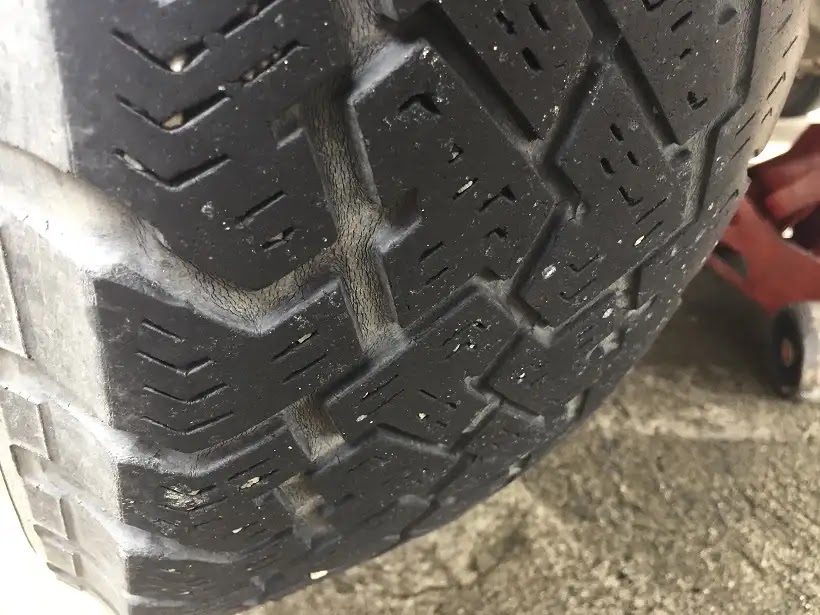Driving a vehicle should be a smooth experience, especially when it comes to steering. But what happens when the power steering becomes stiff while turning? This issue can be alarming and uncomfortable, affecting your ability to control the vehicle properly. In this article, we will explore why your power steering might feel stiff when turning, common causes, symptoms to watch for, and how you can fix the problem.
👉What is Power Steering?
Power steering is a system designed to make it easier for drivers to steer the vehicle, especially at lower speeds. It reduces the physical effort required to turn the steering wheel, allowing smoother and more controlled maneuvering. Modern vehicles are equipped with either hydraulic power steering (HPS) or electric power steering (EPS), each using different mechanisms to assist with steering.
In hydraulic power steering, fluid is used to generate the pressure needed to assist with steering. Meanwhile, electric power steering relies on electric motors and sensors to provide assistance. When everything is working properly, the power steering should make turning your vehicle a breeze. But if something goes wrong, you may notice that the steering becomes stiff, especially when making turns.
👉Common Symptoms of Power Steering Stiffness
If your power steering is stiff when turning, it's important to understand the symptoms associated with this problem. Here are some signs that you might notice:
1. Increased Effort Required to Turn the Wheel: One of the most obvious signs is that the steering wheel feels harder to turn, especially at low speeds or while parking.
2. Whining or Squealing Noise: If you hear unusual noises when turning the steering wheel, it could indicate a problem with the power steering system. These noises may suggest a lack of power steering fluid or a failing pump.
3. Steering Wheel Jerking or Pulsating: If the steering wheel feels jerky or pulsates as you turn, it may be a sign of an underlying issue within the power steering system.
4. Uneven Steering: You may notice that the steering wheel feels stiff in one direction but not the other. This can be caused by a mechanical problem in the steering rack or a hydraulic issue.
5. Steering Fluid Leaks: Fluid under your vehicle could be a sign of a leak in the power steering system, which can result in stiff steering.
👉Why is Power Steering Stiff When Turning?
If your power steering is stiff when turning, there are several potential causes. Here are the most common reasons for this issue:
1. Low or Contaminated Power Steering FluidPower steering fluid is essential for hydraulic power steering systems. This fluid transmits the necessary pressure to make steering easier. When the fluid level is low, it causes increased friction within the system, making the steering wheel hard to turn. Additionally, if the fluid becomes contaminated with dirt or debris, it can thicken and lose its effectiveness.
Solution: Regularly check your power steering fluid level and top it off if necessary. If the fluid is dirty, flush the system and replace it with clean fluid as per your vehicle manufacturer’s recommendations.
2. Power Steering Pump FailureThe power steering pump is responsible for generating the hydraulic pressure that assists with steering. If the pump is damaged or worn out, it can fail to provide adequate pressure, resulting in stiff steering. A failing pump may also make whining or groaning noises, indicating it's struggling to function properly.
Solution: If the power steering pump is failing, it may need to be replaced. A professional mechanic can diagnose the issue and recommend the appropriate repair.
3. Belt ProblemsIn vehicles with hydraulic power steering, the power steering pump is driven by a belt. If the belt is loose, worn, or damaged, it may slip, reducing the pump’s ability to generate hydraulic pressure. As a result, the steering can become stiff and unresponsive.
Solution: Inspect the serpentine or drive belt for signs of wear, cracks, or looseness. Replace or tighten the belt as needed to restore proper steering functionality.
4. Steering Rack IssuesThe steering rack is a key component that connects the steering wheel to the wheels of the vehicle. Over time, the rack can wear out or become damaged, leading to stiffness when turning the wheel. This problem is more noticeable when turning at low speeds.
Solution: If the steering rack is worn or damaged, it may need to be repaired or replaced. This is typically a more involved repair, requiring the expertise of a mechanic.
5. Tire Pressure ImbalanceThough it may seem unrelated, tire pressure can affect the ease of steering. Low or uneven tire pressure can increase the resistance when turning, making the steering wheel feel stiffer than usual.
Solution: Regularly check your tire pressure to ensure it is at the recommended level for your vehicle. Inflate your tires as needed to ensure smooth steering performance.
6. Wheel Alignment ProblemsImproper wheel alignment can create resistance when turning the steering wheel. Misalignment can occur due to hitting potholes, curbs, or as a result of normal wear and tear. In addition to stiff steering, you may notice uneven tire wear and the vehicle pulling to one side.
Solution: Get your wheel alignment checked by a professional and have it adjusted if necessary. Proper alignment not only improves steering but also extends the life of your tires.
7. Faulty Steering ColumnThe steering column houses various mechanical components that connect the steering wheel to the steering rack. If any of these components become worn or damaged, it can make steering more difficult and stiff.
Solution: A faulty steering column may need to be repaired or replaced, depending on the extent of the damage.
8. Electric Power Steering (EPS) ProblemsFor vehicles with electric power steering, a failure in the electrical components—such as the EPS motor, sensors, or wiring—can lead to stiff steering. EPS systems rely on electronic signals to provide steering assistance, so any disruption in this system can make the steering wheel hard to turn.
Solution: A diagnostic check using specialized equipment may be needed to identify the problem. Repairs may include replacing the EPS motor or addressing issues with sensors or wiring.
👉Diagnosing Power Steering Problems
If you're experiencing power steering stiffness when turning, it's important to diagnose the issue properly before attempting repairs. Here's a step-by-step guide for identifying the root cause:
Step 1: Check Power Steering FluidStart by checking the power steering fluid level and condition. If the fluid is low, top it up and monitor the level over time to check for leaks. If the fluid looks dark or dirty, it may need to be flushed and replaced.
Step 2: Inspect the Power Steering PumpListen for any unusual noises coming from the power steering pump, such as whining or groaning. These sounds may indicate that the pump is failing. You can also check the power steering belt for signs of wear or looseness.
Step 3: Look for LeaksExamine the power steering hoses, lines, and seals for signs of leaks. Fluid leaks can reduce the effectiveness of the system and lead to stiff steering.
Step 4: Check the Tires and AlignmentInspect your tire pressure and ensure it is at the correct level. Additionally, have your wheel alignment checked, especially if you've recently hit a curb or pothole.
Step 5: Assess the Steering Rack and ColumnIf you suspect a problem with the steering rack or column, have a professional mechanic inspect these components. They can determine if they are worn or damaged and recommend the appropriate repair.
Step 6: Diagnostic Check for EPS SystemsIf your vehicle has electric power steering and the steering is stiff, a diagnostic scan may be necessary to identify electrical issues. A mechanic can check for error codes related to the EPS
👉Preventing Power Steering Problems
To avoid future problems with stiff steering, regular maintenance is key. Here are some preventive measures you can take:
• Regular Fluid Checks: Keep an eye on your power steering fluid levels and replace the fluid at the intervals recommended by your vehicle’s manufacturer.
• Routine Belt Inspections: Check the condition of the power steering belt and replace it if it shows signs of wear or damage.
• Tire Maintenance: Ensure your tires are inflated to the correct pressure and have your wheel alignment checked periodically.
• Professional Inspections: Have your power steering system inspected by a mechanic during routine maintenance to catch any potential issues early.
💬Final Thoughts
Experiencing power steering stiffness when turning can be frustrating and unsafe, but it is a problem that can usually be resolved with proper diagnosis and repairs. Whether it's a low fluid level, a failing power steering pump, or an issue with the electric steering system, addressing the issue promptly will restore smooth and responsive steering to your vehicle.
By following the steps outlined in this article and staying proactive with your vehicle's maintenance, you can prevent power steering problems from affecting your driving experience.
💬Final Thoughts
Too much car engine idle vibration can be both annoying and a sign of more serious underlying issues. Understanding the causes, such as worn engine mounts, faulty spark plugs, or vacuum leaks, can help you address the problem promptly. Regular maintenance and attention to
< br />Want more videos all about auto?
Subscribe to our YouTube channel👉Cartech Home


























